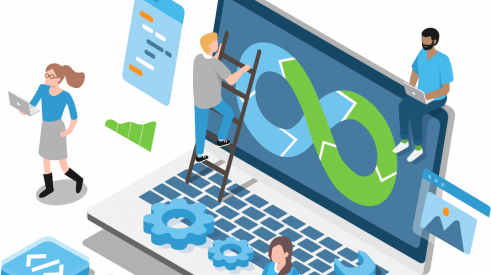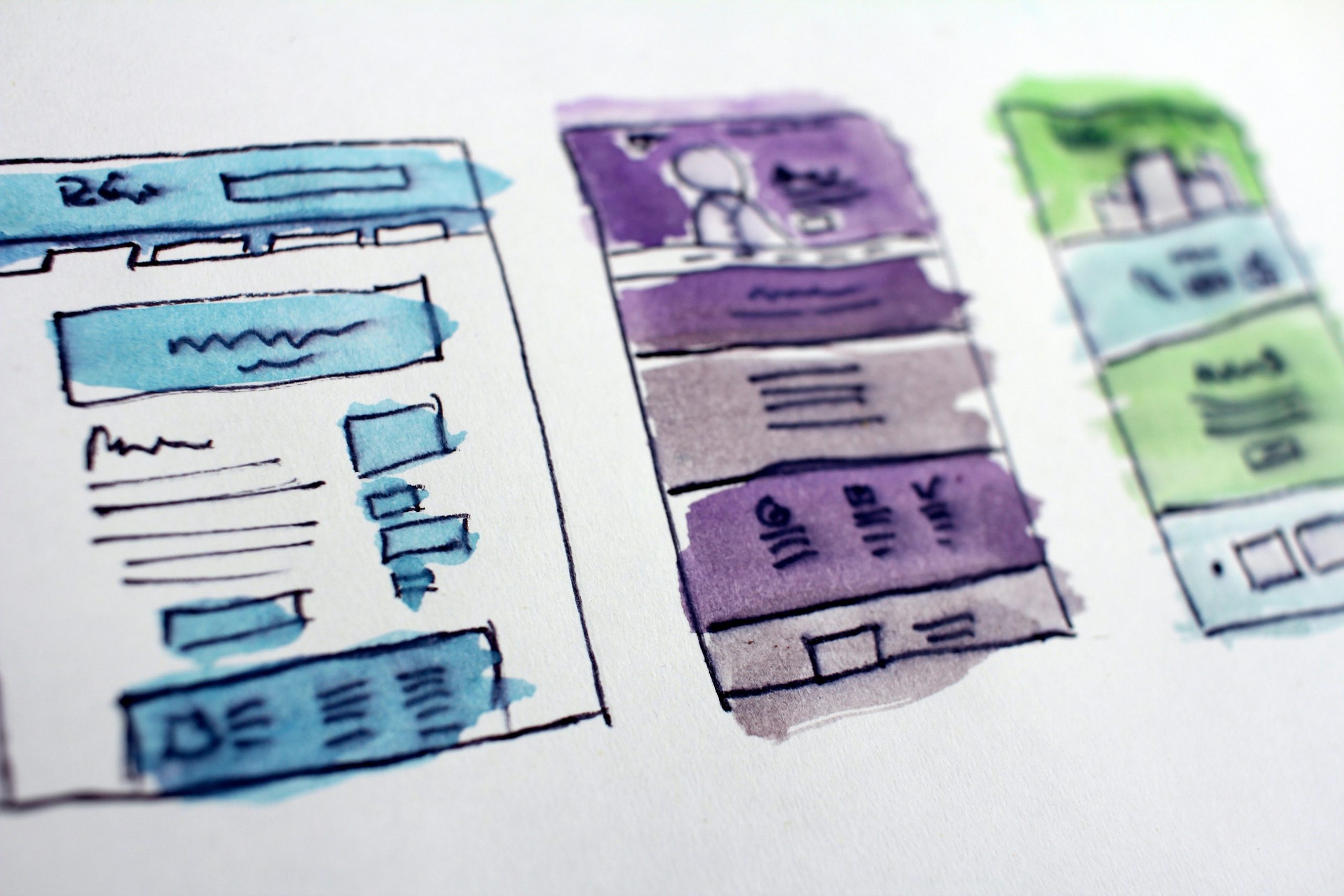This is a topic that is still too little discussed today, but… how can technology be integrated into sustainable development? Are technology and ecology destined to be at war with each other? What can we do in our daily lives to reduce the carbon footprint of our digital tools? What is Green Tech? In this article, we’re not looking to provide the absolute keys to sustainable development. Instead, we aim to open the discussion and make sustainability a more frequent topic in the digital world of Quebec.
A Question from All Angles
First of all, it might be wise to remember what sustainable development is! In its purest definition, it is a development that meets the needs of the present without compromising the ability of future generations to meet their own needs. This long-term vision is what defines the idea of sustainability. To achieve this, sustainable development relies on three inseparable axes: economy, environment, and social sphere.
Technology has both positive and negative impacts in each of these spheres. As a player in digital innovation, our role is to understand these consequences to better act daily. Our role is also to measure them in our projects to ensure that our clients also respect the concept of sustainable development in their activities.

The Pillars of Sustainable Development — Adaptation from LCL Environment
Technology and Economy
The Obvious Support for Productivity
To understand the role of technology in sustainable development, the simplest way is to start with the economic aspect. In this reflection, the goal is to find a balance between profit and sustainable management. It’s a complex game between efficiency, profitability, and the long term.
No doubt that digital tools help to become more efficient. They can:
- Improve sales and customer relationships
- Reduce operating costs and their management
- Increase a company’s competitiveness
- Simplify daily tasks to gain efficiency
- Strengthen relationships between employees
- And so many other benefits!
Pushed to the extreme, innovation can, however, pose risks to our economy. Think about the integration of robots in factories and the resulting layoffs… This is not necessarily virtuous from an economic point of view! Like any element, the glass is never full, hence the importance of questioning the limits we want to set.
To push this reflection further, we recommend this article!
A Lever to Integrate Sustainability into Activities
Our view of technology should not be limited to pushing productivity at all costs. We can also think of it in a sustainable way! For example, some tools can help limit waste in companies. By better tracking sales, inventories, or expiration dates, integrating management solutions can allow us to better manage what we produce and therefore… what we throw away.
Technology also allows for improved product traceability. By improving it, we can control supply and production chains, and thus ensure justice in the creation process. Many companies continue to buy raw materials from suppliers believing that everything is fair, while at the end of the chain, it’s underprivileged producers on the other side of the world who are working…
Finally, technology can also be used to reduce energy expenditures. Better controlling temperatures in a factory, remotely managing office lighting based on hours, or automating the management of computer standby times… it is possible to get help from innovation and, in particular, connected objects (IoT) to reduce our energy consumption.
In any company, these are actions that can be implemented to integrate the concept of sustainability a little more into its activities. Certainly, once again, the glass is never full. But the most important thing is to understand that we can put technology at the service of our productivity while adopting more responsible practices (RES).

Technology and Society
More Accessible Institutions
The other founding pillar of sustainable development is society. Promoting the social aspect means encouraging cohesion among individuals, contributing to the reduction of inequalities, ensuring the general well-being of society, or even valuing territories. Technology can help achieve these goals, especially because it can improve communication between the central actors of our societies and strengthen their collaboration.
Associations, governments, media, educational institutions… digital tools are increasingly finding their place in their activities. Thanks to them, these public actors communicate more easily with the population and improve exchanges. Digital technology also, in a way, strengthens universal accessibility to all services. By promoting respect for certain standards, the platforms of institutions allow for an inclusive approach to disseminate their aid programs and the most essential communications.
The digital transformation of public institutions thus brings great advantages, even if there are significant challenges, such as access for all to the Internet. However, this observation can be extended to all companies undergoing digital transformation. When you implement new software, also think about the social and human aspect of it. Make it accessible, but more than that. Ensure that it maximizes the well-being of your employees in their daily tasks. In short, adopt an advanced approach to user experience (UX) to ensure that the human is at the heart of your design.

Social Innovation
Increasingly, we also talk about technology or social innovation. It’s a concept that highlights innovative responses to important environmental and social issues. We’re talking here about a project that has positive impacts for many areas, such as art, education, equality, climate warming, etc.
In companies, it is also possible to push for social innovation by focusing on an issue that is close to the hearts of employees. And this is not necessarily in contradiction with productivity, far from it! Setting up a committee or a research group in R&D on the issue of well-being at work gives your teams a chance to find solutions to make them more fulfilled and therefore… more productive and engaged. Once again, the pillars of sustainable development are not in contradiction. They synchronize to offer sustainable and respectful results.
A Concrete Example
It’s high time to bring some concreteness to our discussion! Here is our example: My Cafeteria of the Montreal School Commission (CSSDM). It’s a project that we led jointly using innovation as a lever against discrimination in schools. More specifically, we developed a transactional system of cash registers to reduce perceptions of inequality among children.
To learn more, it’s here!
In fact, this example allows us to conclude this chapter by showing that any project can have a social connotation. Certainly, the My Cafeteria system makes payment processes in schools simpler and simplifies the management of purchases. However, the project could have stopped there, without including the children and their parents. By integrating social thinking, we can push digital solutions further and ensure that they are truly useful to their users. So, you have everything to gain by integrating this sphere into your reflections!

My Cafeteria Project of the CSSDM — Realization by Libéo
Technology and Ecology
The last aspect that is more than essential to talk about sustainability… the environment! The ecological aspect of technologies is today a topic that is increasingly current. Because yes, when we develop or use a digital solution, we pollute. We must be aware of this in 2020.
Major Impacts on the Environment
Ecology, technology… we immediately think of planned obsolescence! Planned obsolescence is a technique used by a producer or manufacturer to reduce the product’s life cycle in order to generate more repetitive and cyclical sales. From an environmental point of view, it’s a disaster that creates thousands of waste every year, from washers to coffee machines, including batteries.
However, this is a topic that does not only affect physical goods. Enterprise software is also a victim, and that’s why every company can act against this scourge. Firstly, by not being the producer of this obsolescence. There are hundreds of ways to build loyalty and sell! Secondly, by not choosing software solutions that are known to change versions permanently or delete features overnight. Integrating the environment into your company’s digital world therefore starts by mastering the life cycle of your solutions.
Reducing environmental impact also requires admitting that the files, documents, and data that we store in our company pollute. Yes, they pollute because of their storage. The more information you keep, the more you run data centers that are highly energy-intensive. Better managing your data is also a first step towards adopting an ecological approach!
Green Tech… a Hope?
The world of technology is, however, not all dark in terms of ecology. Today we see the emergence of this trend, Green Tech (or Cleantech). Green Tech refers to companies or technologies that are considered environmental or ecological. This can be both the label given to a commercial innovation that respects the environment and software dedicated to ecological preservation. More specifically, Green Tech:
- Uses natural resources with the goal of improving efficiency
- Generates less waste and toxicity related to its activities
- Ensures the same results as traditional technologies
- Benefits the end customer and their environment
Many Green Techs are flourishing in our ecosystem around this “green” market. They could potentially compete with traditional players who have not integrated environmental notions into their offer. Thinking about it is also taking a strategic axis for tomorrow!
To discover some of these Green Techs, it’s here!
For ecology, Green Tech is therefore a real hope! Certainly, in this context, technology serves to make our actions more responsible. In our opinion, every company would have everything to gain by thinking about how its solutions can be integrated into Green Tech!

Becoming Responsible Companies
Integrating notions of sustainable development into one’s organization is done through corporate social responsibility (CSR). CSR is the commitment made by a company to generate social, environmental, and economic effects responsibly and sustainably. Several activities can be included in this principle:
- Adopt a company policy that encourages its partners to adopt ethical business practices
- Reinvest profits in health, safety, or environmental programs
- Support charities in the communities where the company operates
- Promote gender equality within the company’s teams and management committees
More than moral measures, being a responsible company is also a real competitive advantage. It allows you to add additional value to your products, be more competitive in terms of recruitment, and engage your employees more sustainably. In short, you have everything to gain by becoming one!
If you want to start your reflections on the subject, here are the 9 points you should think about:

The Pillars to Be a Responsible Company — Adaptation from Novethic
What You Should Remember…
Regardless of the organization or industry in which we work, we can all take concrete steps to ensure our activities are sustainable. Environment, economy, and society are the three poles that must be integrated when developing projects. In this article, we focused on the positive and negative impacts of technology. Innovation can be a key to many problems, let’s use it in the best way!




